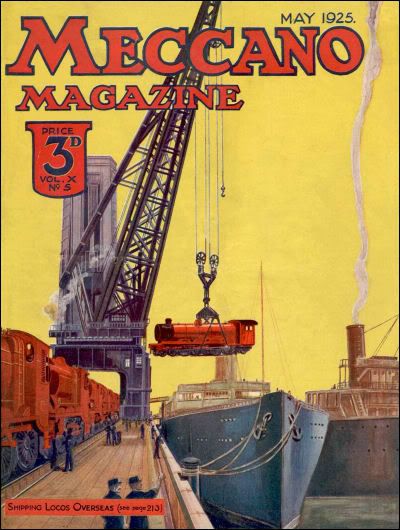 Meccano set, 1950s
Meccano set, 1950s — click the picture for the link to the history of Meccano
In the early 1950s I was given my first Meccano set — and I'd be pushed to think of a better present that fits the requirement for an "Engineering Christmas Toy" than Meccano. It was first sold (here) in England, over a century ago; it's still available — although not from the original manufacturers.
Until I read this thread I'd never heard of the Erector sets: they appear to be identical, or very similar, to Meccano; it may even be Meccano marketed under the Erector name in the United States; they both seem to be, more or less, the same thing.
With a supply of flat & angle sections, plates, brackets, spindles, gears, etc, you could build toys, models, structures and mechanisms: the only limit was the quantity and variety of components you had — and your imagination. All you had to start off with was a collection of parts: the rest was up to the user; you had to
think to get anything out of it — and that's important, because Meccano is far more than a
toy . . . I'm beginning to regret selling mine now, over 50 years ago! By that time it had grown considerably, a lot of was pre-war stuff bought second hand.
For most people there was one thing they didn't like about Meccano — and that was the nasty little square nuts for the (5/32" BSW thread) screws that were the standard Meccano fastener — they were sharp cornered, easy to lose — and hard on the fingers. The bent-rod screwdriver and the pressed steel spanner weren't much better.
Some of the mechanisms that have been built with Meccano are impressive: the
Mathematical Gazette, October 1970, had an article called "Meccano in the Classroom" — it described the so-called Differential Analyser, an analog device giving numerical or graphical solutions to differential equations. In the article is a reference to the book, Mathematical Models (by H M Cundy & A R Rollett), and in that book is mentioned a machine called the
Meccanograph, which is similar to the harmonograph. All built from Meccano — or Erector . . .
(That same book also briefly describes the Roberval Balance, which was mentioned in the "The Lever Paradox" thread.)

Click the image for the magazine index . . .
And here are some interesting examples of differentials, built with Meccano, from the South East London Meccano Club:
Click here . . .
I wonder if the principle of the ubiquitous Dexion slotted angle section, used for shelving and racking systems, was originally inspired by Meccano, or of course, Erector.


